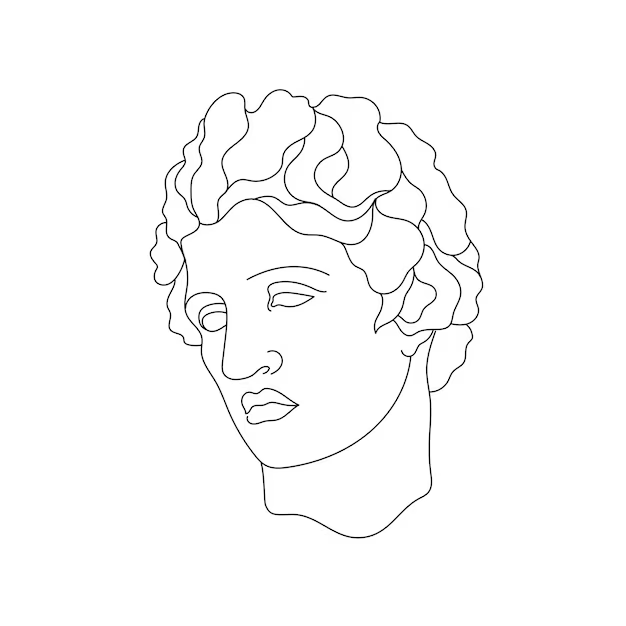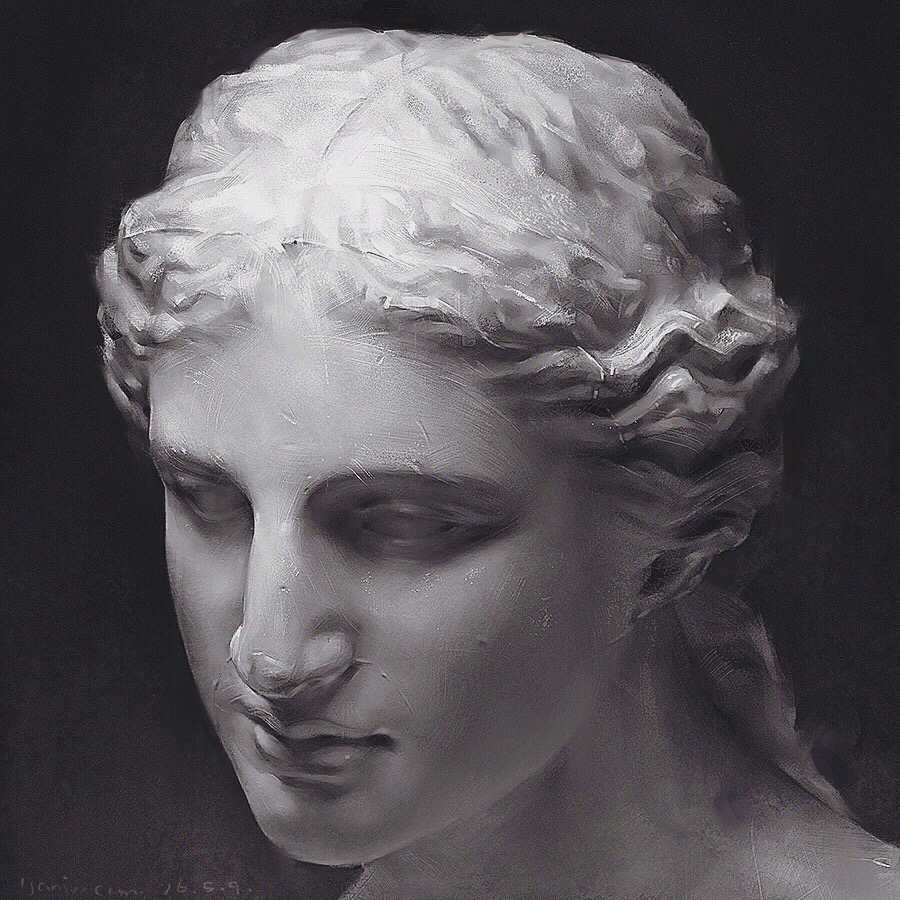Sculpture drawing captures the essence of three-dimensional forms on a two-dimensional surface, allowing artists to convey depth, texture, and volume. This art form can invigorate your creativity, improve your observation skills, and deepen your understanding of form. Whether you are just starting or looking to refine your skills, mastering sculpture drawing unlocks new dimensions in your artistic practice. In this guide, we’ll explore essential techniques that can reignite your passion for drawing and elevate your artwork.
Understanding the Basics of Form
The Importance of Shape
To successfully create sculpture drawings, you must first understand the basic shapes that comprise three-dimensional forms. Familiarize yourself with geometric solids like cubes, spheres, cylinders, and cones. Know how these shapes behave under light and shadow. Understanding basic shape is not just about recognizing them; it’s about seeing how they come together to create complex forms. For example, an hourglass figure consists of two cylinders connected at the waist. Break complex subjects down into their basic parts, which makes them easier to sketch.
Analyzing Different Perspectives
When drawing sculptures, consider 3D perspectives. Examine how objects appear from various angles. This practice allows you to understand how light strikes different surfaces, creating highlights and shadows. Placing your subject in a rotating display or sketching from life improves your understanding of depth. Experimenting with different viewpoints will enrich your drawings and allow viewers to feel the dimensional movement of your subjects.

Mastering Proportions and Scale
The Golden Ratio
Understanding proportions is vital in sculpture drawing. The Golden Ratio, a mathematical ratio found in nature, establishes ideal proportions. Apply this concept to your drawings to create visually harmonious compositions. While understanding ratios is essential, remember that artistic interpretation also plays a significant role. Deviations from these proportions can yield unique and compelling results. Search for balance while allowing creative freedom to inspire your work.
Scale and Measurement Techniques
Incorporating accurate scale enhances realism in your sculpture drawings. Use a simple tool like a pencil or ruler to measure proportions accurately. The “sight-size” method lets you compare the size of an object with your drawing. Hold your pencil out while standing back from your work, keeping one eye closed to gauge relationships between different parts. Such techniques empower your ability to render realistically, making your sculpture drawings engaging.
Developing Observation Skills
Drawing From Life
To truly master sculpture drawing, immerse yourself in direct observation. Draw from real-life sculptures rather than relying solely on photographs. Observing live forms provides insight into texture, shadow, and light that images may not capture. Visiting art galleries or museums can expose you to works by various artists and styles, enriching your repertoire of techniques and ideas.
Sketching Activities
Engage in quick sketches to improve your observation skills. Set a timer for one or two minutes and draw the outline of a sculpture. Short sessions focus your attention on the essential elements; you’ll learn to distill complex forms quickly. Once you have warmed up with these sketches, spend longer periods refining details and adding depth. This practice not only sharpens your skills but also boosts your confidence as you learn to convey forms effectively.

Mastering Light and Shadow
Understanding Chiaroscuro
Chiaroscuro refers to the strong contrast between light and dark in your drawings. Mastering this technique emphasizes volume, adding depth to shapes and creating drama in your drawings. Study how light interacts with different surfaces. Bright highlights and deep shadows can evoke a sense of weight and dimensionality. Experiment with various lighting setups when drawing sculptures to explore how shadows shift as light changes.
Value Scales and Shading Techniques
Create a value scale ranging from white to black, marking various shades in between. Use this scale as a reference for your shading techniques. Employ hatching, cross-hatching, and stippling to add texture and depth. Try using different pressure levels with your pencil to achieve softer or sharper contrasts. The interplay of light and shadow makes your sculptures come alive, capturing the viewer’s attention and evoking an emotional response.
Exploring Textures and Materials
Observing Surface Qualities
Sculpture drawing often involves intricate surface details. Focus on the textures of different materials—stone, metal, wood, or clay. Each has unique qualities that impact how light interacts with them. Observe how to depict textures through varied marks and shading techniques. For instance, use fine lines to imitate a smooth surface and rough sketches for rugged textures. Your ability to represent texture convincingly will transform your drawings from flat representations into rich, tactile experiences.
Experimenting with Mixed Media
Incorporate various materials, such as colored pencils, charcoal, or pastels, into your sculpture drawings. Different media can add unique qualities, making your work more dynamic. For example, combine charcoal for deep shadows with colored pencils for subtle highlights. Mixing media invites experimentation and allows you to discover new techniques to express texture and form. Don’t hesitate to break traditional boundaries; creativity thrives when you explore the unknown.
Developing Personal Style
Embracing Individuality
While studying classical techniques is essential, the goal of mastering sculpture drawing is to develop your unique voice. Embrace your individuality, allowing your personal experiences and emotions to reflect in your drawings. Look to artists who inspire you—analyze their styles and techniques, but incorporate them into your own work in a way that feels authentic to you. Over time, this authenticity will shine through, making your artwork distinctive.
Creating Series and Projects
Consider working on a series of sculptural drawings to refine your style. Choose a theme or subject that resonates with you, and create multiple drawings based on it. This dedicated focus allows for exploration and experimentation, encouraging growth as an artist. Document your journey and revisit older works to analyze progress, reinforcing your skills while nurturing your artistic voice.

Seeking Feedback and Continuous Learning
Joining an Artistic Community
Engaging with fellow artists can offer invaluable insights and motivation. Join local art groups, attend workshops, or participate in online forums. Sharing your work opens you up to constructive criticism, which can lead to substantial growth. Being part of a community encourages collaboration and exposes you to diverse perspectives that can enhance your skills and inspire your creativity.
Embracing Lifelong Learning
Art is an ever-evolving field, so embracing lifelong learning is essential. Attend workshops, take online courses, or read instructional books focused on sculpture drawing. Learn from experts who can introduce you to new techniques, methods, and ways of thinking. The more knowledge you acquire, the more adept you become in your craft. Commit to continually challenging yourself, leaving room for exploration and discovery.
Reviving Your Art Journey
Mastering sculpture drawing is a journey that can truly revive your artistic spirit. By focusing on fundamental principles, understanding perspectives, and embracing individual style, you can explore the depths of your creativity. Remember that art is as much about the process as the final product. Enjoy every moment of experimentation, observation, and creation.
Take what you’ve learned here and apply it to your work, allowing your love for sculptural forms to flourish through your drawings. This journey will enhance your skills and elevate your confidence as an artist. By investing time in exploration and embracing constructive feedback from peers, you set the foundation for a vibrant and fulfilling art practice. Keep drawing, keep creating, and allow your passion for sculpture to shape the journey ahead!